Aaron Bank: The ‘Father of the Green Berets’ Who Revolutionized Special Warfare
The US Army’s Special Forces are among the most elite military groups in the entire world. Famous for their clandestine warfare capabilities, they regularly strike fear into their enemies. The one who spearheaded the Green Berets’ creation was Aaron Bank, a veteran of the OSS who wanted to ensure the US military could perform covert missions wherever and whenever the need arose.
Aaron Bank joined the Office of Strategic Services (OSS)
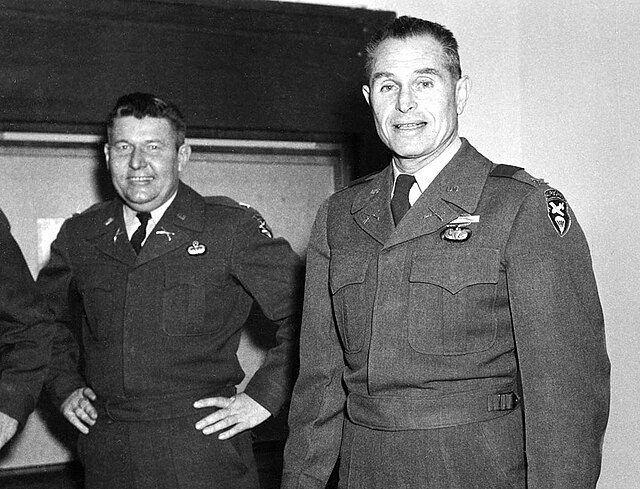
Aaron Bank was born on November 23, 1902, in New York City, New York, to Russian Jewish immigrants. While a child, the young Bank suffered the loss of his father, leaving his mother to raise him while teaching piano, French and German to make ends meet.
His mother’s language skills were transferred to Bank, who was known for his linguistic abilities. He was also athletic, thanks to lifeguard and swimming teacher jobs in Long Island, Biarritz and the Bahamas.
On August 19, 1942, at the age of 39, Bank enlisted in the US Army. Initially deemed “too old” for combat, he was working as a tactical training officer at Camp Polk, Louisiana, when he saw a bulletin requesting volunteers for “special assignments.” As it turns out, physical fitness and linguistic skills were just what the job ordered, allowing him to get obtain a job with the Special Operations (SO) Branch of the Office of Strategic Services (OSS).
Serving overseas with the Office of Strategic Services (OSS)
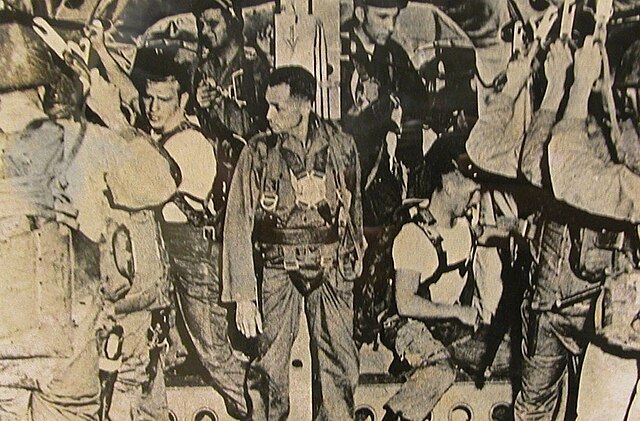
As a member of the OSS, Aaron Bank quickly became a key figure in the agency’s clandestine warfare. On July 31, 1944, he led the Jedburgh Team PACKARD, parachuting into France’s Lozère department. He and his men were charged with meeting up with the French Resistance and coordinating efforts against the occupying German forces with Belgian, British and Dutch personnel.
Once connected, Bank participated in Operation Anvil. Later codenamed Operation Dragoon and better known as the Allied invasion of Southern France, it saw his team drive German forces from the beachhead, liberating several towns ahead of the arrival of ground troops.
Operation Iron Cross
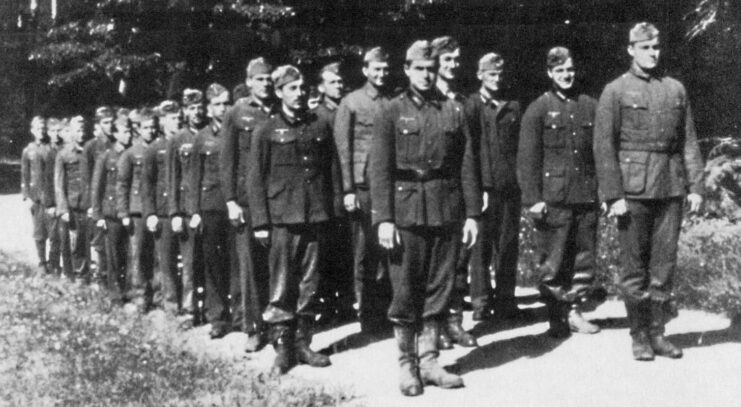
Operation Iron Cross would have been Aaron Bank’s shining moment… Had it gone forward. Conceived by Gen. William Joseph “Wild Bill” Donovan, head of the OSS, it aimed to capture and/or kill the Führer. After recruiting 170 prisoners of war (POWs) who were against the regime, they’d infiltrate the Wehrmacht, but they first needed to undergo paratrooper training for what was deemed a “raid and snatch” mission.
The plan was to parachute these trained volunteers into the Alpine Redoubt, a rumored German stronghold along the Austrian-German border, and capture the Führer and any other high-ranking officials with him. The belief was that they’d retreat to the area as the Allies neared Berlin, but that’s not what happened. Germany’s leader remained in Berlin, leading to Operation Iron Cross’ cancellation.
Bank later told the Times, “I never cried in my life, but I damn near cried when they told me it was aborted.”
Aaron Bank was reassigned to the Pacific Theater
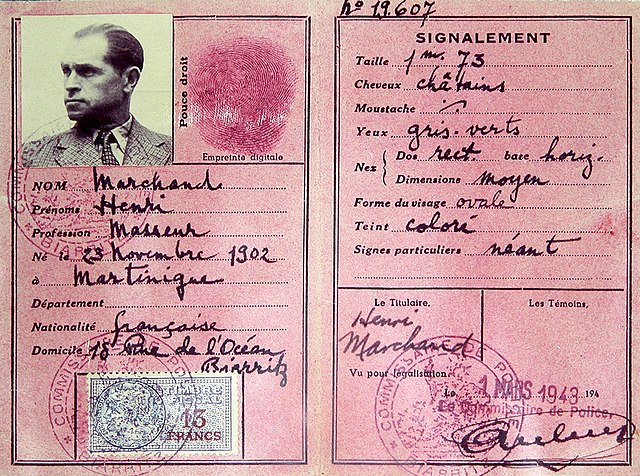
Following Germany’s surrender, Aaron Bank was sent to the Pacific, where he inserted himself into Indochina and worked to free prisoners of war.
While there, he met and worked with Ho Chi Minh, who was leading the Vietnamese resistance against the Japanese occupation. Struck how how popular the man was, Bank relayed what he was witnessing to the OSS and the US government, telling them that the resistance leader should be allowed to form a coalition government. However, American foreign policy viewed a possible Ho-led government as a threat, due to his Communist affiliations, and rejected Bank’s recommendation.
Bank remained in the US Army following World War II, commanding the Army Regional Counterintelligence Corps in Bavaria, before serving with the 187th Airborne Infantry Regimental Combat Team, 11th Airborne Division in Korea.
Founding the US Army Special Forces
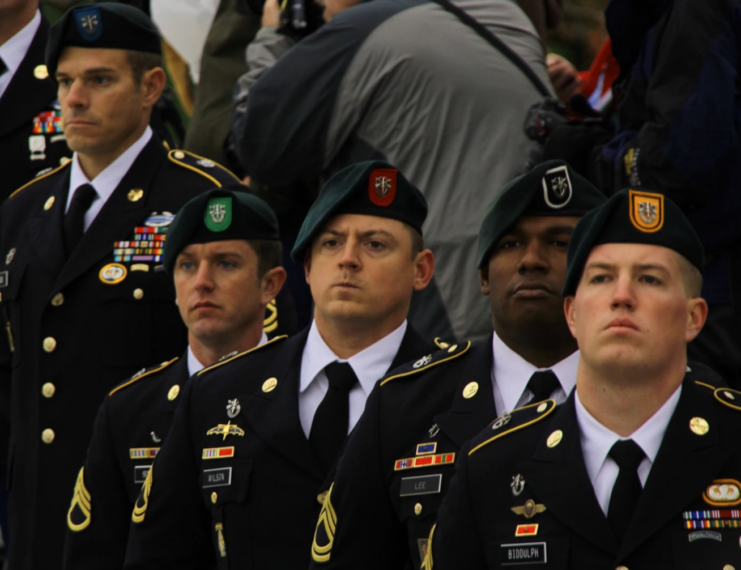
Following his service in Korea, Aaron Bank was appointed chief of the Special Operations Branch of the Psychological Warfare Staff. Before long, he’d become a proponent of a specialized unit within the US Army.
Alongside Col. Russell W. Volckmann, he argued the US military needed a group that was capable of conducting unconventional warfare, similar to that done by the OSS (by this time, it had been replaced by the CIA). As the world was in the midst of the Cold War, the thought was it would be deployed behind the Iron Curtain.
Officials liked the concept and, in 1952, Bank became commander of the newly-formed 10th Special Forces Group (Airborne) at Fort Bragg (now Fort Liberty), North Carolina. Using his OSS experience, he recruited troops from various special operations backgrounds, including the 1st Special Service Force, parachute infantry units and those who’d participated in guerrilla warfare while serving in the Pacific.
The 10th was designed to be an elite unit within the Army, skilled in foreign languages, stealth tactics, sabotage and various forms of warfare. To ensure their success, Bank organized his troops into “A team,” which contained experts in different specialties. He also suggested that these Special Forces troops wear distinguishing colored berets, and while this was initially rejected, President John F. Kennedy would later authorize the wearing of their famous green headgear.
Aaron Bank’s post-military life
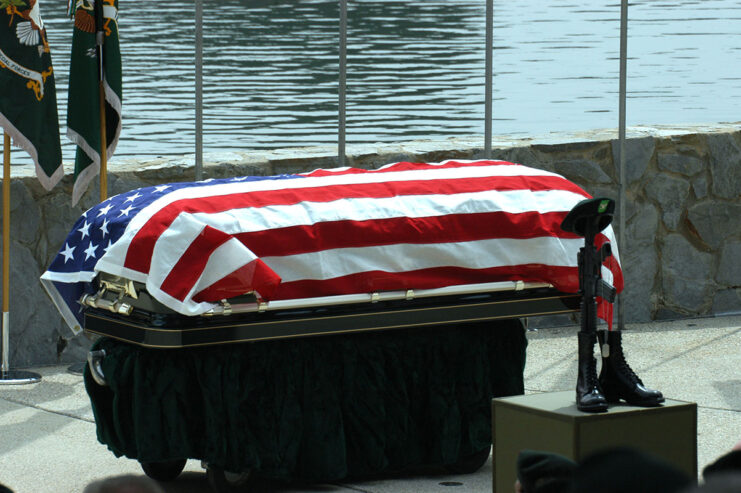
In 1958, Aaron Bank retired from the US Army. That being said, he wasn’t interested in living a slow, quiet life. He relocated to San Clemente, California, where he remained active well into his eighties.
In the early 70s, Bank, having become concerned over the vulnerabilities of nuclear power plants, conducted an investigation into security at San Onofre Nuclear Generating Station. Alarmed at how inadequately it was protected, he lobbied the Atomic Energy Commission (AEC) and testified before the US Congress. It’s thanks to him that significant improvements in security occurred at nuclear facilities across the United States.
More from us: Germany Once Planned to Assassinate Winston Churchill… With Exploding Chocolate
Want War History Online‘s content sent directly to your inbox? Sign up for our newsletter here!
As if this work wasn’t enough, Bank also penned two books, From OSS to Green Berets: The Birth of Special Forces and Knight’s Cross. He passed away at an assisted-living facility on April 1, 2004, at the age of 101. In recognition of his dedicated service, the main academic building at the US Army John F. Kennedy Special Warfare Centre was named in Bank’s honor.
The post Aaron Bank: The ‘Father of the Green Berets’ Who Revolutionized Special Warfare appeared first on warhistoryonline.
Aaron Bank: The ‘Father of the Green Berets’ Who Revolutionized Special Warfare
Philippines Truth
Post a Comment
0 Comments